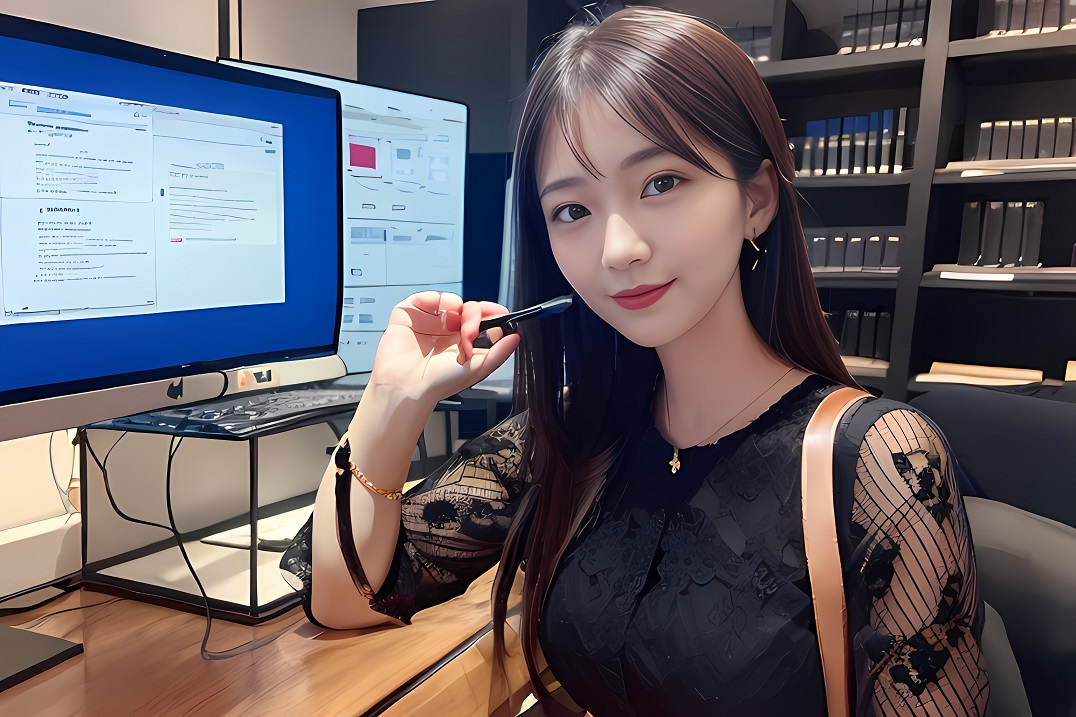Do you know how to use client management system?

Client management system refers to the establishment of digital technology and big data base on the basis of industrialization and intelligent management ideas to provide decision-making for enterprise decision-makers and employees The management platform of the means of operation. Its application range has expanded from manufacturing to retail, service, banking, telecommunications, government agencies and schools and other business sectors. The essence of the Industrial Internet lies not in the Internet but in traditional industries. IDC reports that the SaaS collaboration market is growing rapidly. When enterprises go to the cloud, they use a brand-new distributed cloud architecture to create a cloud dynamic domain model, create an epoch-making enterprise-level cloud-native PaaS+SaaS platform, support cloud personalized customization, and help customers easily use the cloud, innovate quickly, and continue to iterate. Client management system cloud platform code matching logistics system is a professional code matching logistics system specially customized for the retail industry. It was initially defined as application software, and was quickly accepted by commercial enterprises all over the world. Later, it developed into an important modern enterprise management theory and is an important tool for implementing enterprise process reengineering.
The fundamental purpose of client management system implementation is to enhance the group's management and control capabilities, rather than systems such as accounting computerization to improve individual business activities. Therefore, the decision-making issues involved in the implementation of client management system should be judged based on this fundamental purpose.
LongRiverTech client management system observes and manages the operation of companies from many different angles, such as: sales angle, customer angle, production circulation angle, product angle, etc., to achieve the optimal combination of corporate profit goals and to meet industry demand. Since LongRiverTech released its first ERP product in 2017, LongRiverTech has continued to invest resources in the continuous iteration and evolution of client management system. In 2019, the first enterprise version based on B/S web architecture was released, which supports cloud deployment and operation. LongRiverTech client management system is committed to helping the development of the Industrial Internet, Industry 4.0 and the new economy of intelligent manufacturing. LongRiverTech ERP is a one-stop ERP system for small and medium-sized enterprises, which can be personalized business customization, cloud platform deployment, etc. In 2021, LongRiverTech released the first cloud service brand "Hanju", providing a brand-new SaaS operating environment and business model for the release and service of subsequent ERP products and client management system.
LongRiverTech engineering management includes: project, material, contract order, accounting integration, and can meet the special industry needs of the .
Client management system cloud platform defines a new service model, and the activation management is infinitely possible. One-click access to the key operating data of the enterprise anytime, anywhere, reconstructing a new service model, building an IT intelligent operation and maintenance system, and empowering enterprise management upgrades. Through the PDA order dispatching function, one order corresponds to multiple warehouse specialists to complete the picking. The warehouse specialist operates the interface, scans the shelf and directly packs and packs. The PDA operation interface clearly understands the work progress. When specifying the goods, the goods are immediately known. Precise positioning. Warehouse KPI assessment uses warehouse daily throughput, personnel performance assessment, warehouse daily picking success rate and response time analysis, warehouse daily picking success rate and response time analysis, such as increasing the accuracy rate of PDA inventory by 100% above. In the age of intelligence, the operating environment of enterprises has undergone fundamental changes. Deploying more advanced resource management software has become an important way for modern enterprises to seek survival and development, and it is also one of the important ways for enterprises to store competitive capital in the new era. So, what is the role of resource management software for enterprises? What can resource management software do? how did you do it? One of the main functions of resource management software: To be successful in improving the efficiency of enterprise management, companies must first change their tools. Resource management software integrates all resources such as customers, projects, sales, quotations, contracts, procurement, inventory, production, delivery, after-sales, finance, personnel, office, etc. Into one system, replacing traditional manual operations with advanced information systems. Limit the reduction of personnel participation, realize enterprise digitization, paperless and automated office. The second main function of resource management software: optimize enterprise business processes. Resource management software realizes the digital management of all businesses. Each business process becomes visualized and controllable in the system. If there is a problem in any link, it can be obtained in the system. Real-time feedback. For example, in the resource management software, if the customer does not contact after receiving it, the customer follow-up is unsuccessful, the customer follow-up expires, etc., the system will automatically recycle it. In the sales contract, the product price cannot be saved if it is lower than the minimum price. In the purchase contract, the product price cannot be saved if it is higher than the maximum purchase price. The automatic control of the system replaces the manual back and forth modification, confirmation, and running errands, and the process becomes convenient and efficient . Moreover, if there are operating procedures that do not comply with the regulations, they cannot be carried out in the resource management software. The sluggish material handling resource management system reduces sluggish material in four stages. 1. R&D stage; 2. Planning stage; 3. Implementation stage; 4. Post analysis. The enterprise management system can warn of possible sluggishness in advance during the research and development stage. One is that when the product design is changed, the expected sluggish material table will be generated for the materials that are expected to fail; the other is to find out whether the supply manager judges whether the inventory materials that are not used in all BOMs are sluggish. In the planning stage, the system provides MRP/LRP, aiming to satisfy production with less materials/materials with short occupation time. In the execution stage, the system provides the function of querying alternative materials, and it is convenient to query the status of alternative materials when the original materials are not enough. The system also provides a variety of reports in the inventory management system to prompt materials that have been sluggish, such as material forecast status table, sluggish material table, material batch number deadline control table, etc. If the customer cancels or changes the order, it can also quickly find out the corresponding purchase order according to the tracking of the order procurement status provided by the system, which is convenient for the purchaser to take measures. The common e-commerce resource management cloud platforms in the market usually need to connect with dozens of mainstream e-commerce platforms for batch delivery and inventory management. From cash register, store management, supply chain to O2O, one-stop realization. This can increase the wholesale business by 50%, and manage dealers to increase the repurchase rate. When customizing the financial management module, generally consider: credit management, innovation impact analysis, bidding financial management, financial indicators, financial management method configuration, financial decision support, financial management tool collection, financial management theory implementation, financial evaluation indicators, Financial strategy management, financial management audit support, financial management model configuration, financial analysis reports, etc. Client management system inventory automatic monitoring and alarm system, once the raw material is lower than the warning line, it will automatically alarm to ensure nothing goes wrong. The system updates inventory information in real time, and simultaneously supports computers and mobile phones to view the latest data. Sales can open the mobile phone to check the inventory materials at any time through the BOM material list, which is clear at a glance and boldly accepts orders. Especially suitable for the majority of small and medium-sized enterprises.

LongRiverTech system management functions include: login registration, user management, roles and user groups, authority and menu configuration, system parameters, data backup and recovery. LongRiverTech client management system sales return order includes: create sales return order, view sales return order flow, write off sales return order, approve sales return order, view sales return order documents, print sales return order documents, and export sales return order documents. Through the data configuration of LongRiverTech client management system, the subject limit configuration and subject account relationship setting can be performed.
Multi-platform access (seamless connection with mainstream platforms can support automatic order synchronization, automatic inventory synchronization, new product release, product off-shelf, automatic upload of product information such as unit price, description, name, postage template, etc.)E-commerce cloud builds an integrated new retail management model for e-commerce companies and provides professional and comprehensive management services for e-commerce companies. Provide an overall omni-channel solution, run through the entire link of the enterprise, open up online and offline business and supply chain, and integrate purchase, sales and inventory, and build a complete new retail closed loop for e-commerce enterprises. Online and offline data sharing, using the advantages of stores to lock traffic, improve stickiness, and reduce merchant costs. Through membership marketing, users on other platforms will be diverted to self-built micro-malls and food delivery malls to get rid of platform restrictions. Realize the synchronous docking of various data of traditional e-commerce, mobile e-commerce, physical stores, third-party systems, and enterprise-owned systems, and integrate online and offline unified management. Multi-angle presentation of product, order, channel, distribution, financial and other data reports to help enterprises accumulate data and facilitate enterprise operations. The resource management system can implement flexible sales forecasting methods, and can simultaneously formulate multiple elastic sales forecast plan; users can decide the roughness or refinement of the forecast completely according to their own needs. Multi-level BOM management, no matter how complicated the BOM is, we will store and manage it for you at any time, call it at any time, simulate production, automatically calculate the raw materials required for production, and calculate how many finished products can be made according to the number of raw materials. Spare parts management The resource management system provides complete spare parts management functions. The quantity of spare parts can be entered in both sales and purchase, which not only ensures the accuracy of the inventory quantity, but also does not affect the account processing. The sales management functions of the resource management system include: sales plan, sales file, sales opportunity, sales quotation, sales contract, sales order, sales delivery, sales payment, sales return, and commissioned sales. Client management system cloud platform calculates procurement requirements based on BOM to avoid downtime. Analyze the material shortage and arrival time of the order, strengthen the control and outsourcing management of materials, provide the production kanban function, and grasp the production progress. The boss can grasp the company's accounts receivable and inventory in real time, solidify the company's process, strengthen the company's management and control and prevent financial risks.
Through the data configuration of LongRiverTech client management system, the subject limit configuration and subject account relationship setting can be performed. Client management system workflow functions include: rule configuration, approval execution, to-do items and lists, business requests, and approval flow. Basic data is the basic function of client management system. LongRiverTech software supports the management of all business objects, such as: subjects, employees, commodities, accounts, warehouses, suppliers, customers, groups, companies, departments, warehouses, factories, stores, and more Account, multi-warehouse, multi-currency and foreign exchange support, item support, storage capacity and location support, storage capacity size, volume and load. Client management system logistics management functions include: transport order, delivery note, means of transport configuration, delivery date, intermediate node, customs, route tracking, transport plan, multimodal transport. LongRiverTech client management system supports both counterparty single account and counterparty multiple accounts.

To adopt computer-aided enterprise production management, first of all, the computer must be able to read the composition of the products manufactured by the enterprise and all the materials involved. In order to facilitate computer identification, the product structure expressed in diagrams must be converted into a certain data format. The file that describes the product structure in a data format is the bill of materials, or BOM. It is a technical document defining the product structure, so it is also called product structure table or product structure tree. In some industries, it may be called "recipe", "ingredients" or other names. The core theories of information management systems usually include: entrepreneurship, psychology, management, economic theory, game theory, economic analysis tools, sub-disciplines of economics, economic indices, economic school analysis, economists’ treatises, etc. After the management system was launched, the basic work process went smoothly, and the standardization of internal management was much improved compared with the past. For example, the order form was relatively simple, and the order was filled out manually. But now it is necessary to input all the data into the system according to the requirements, and the workload and business requirements in the early stage are relatively strict. The change in the way of working will definitely bring some discomfort to the operator. Due to the sorting out of business, the adjustment of post personnel and post mode, and the change of management mode, the staff were very uncomfortable, and some staff had resistance in the early stage of the project. For the sorting and optimization of business processes in the information system, the optimization and improvement of the internal system operation of the enterprise is the focus, so as to promote the smooth progress of the information work. Management efficiency improvement activities have played an important role in the construction of information technology, making the later business process execution process smoother. After the standardization of operation was improved, the management system began to really play its role, making the implementation effect more obvious. It embodies the essence of its "management tool" in practical application. Comprehensively balance and optimize management of comprehensive resources such as human, financial, material, information, time and space owned by the enterprise. The resource management software coordinates the various management departments of the enterprise. The resource management software conducts business activities around the market orientation and improves the core competitiveness of the enterprise. Power, resource management software to achieve the best economic benefits. The core business of financial technology software systems usually includes: securities, stocks, foreign exchange, futures, funds, banking, insurance, currency, financial theory test data, currency theory test data, bank theory test data, stock price pattern test data, stock investment methods, Equity, stock analysis index, stock index, stock technical theory test data, stock technical index, stock exchange and data, securities trading system and other compliance documents, bond, bond analysis tool, bond index, futures exchange and data, futures Technology theory, exchange rate, monetary policy, monetary unit, investment, investment theory, loan, commercial paper, credit card, financial institution, fund index, option, option theory, financing, trust, gold, warrant, credit derivative, international finance, finance Supervision, financial regulations, auctions, pledges, mortgages, pawns, financial derivatives, financial investors, financial relations, financial crisis, financial management, balance of payments adjustment tools, etc.
To sum up, it is the purpose of the enterprise to implement client management system. Client management system has now become an essential tool for modern enterprise information management. It can help enterprises get rid of the shackles of traditional management methods, speed up the pace of enterprise development, avoid mistakes caused by manual decision-making, improve the efficiency of enterprise office work, and become an enterprise in the market. Strong support in the competition.